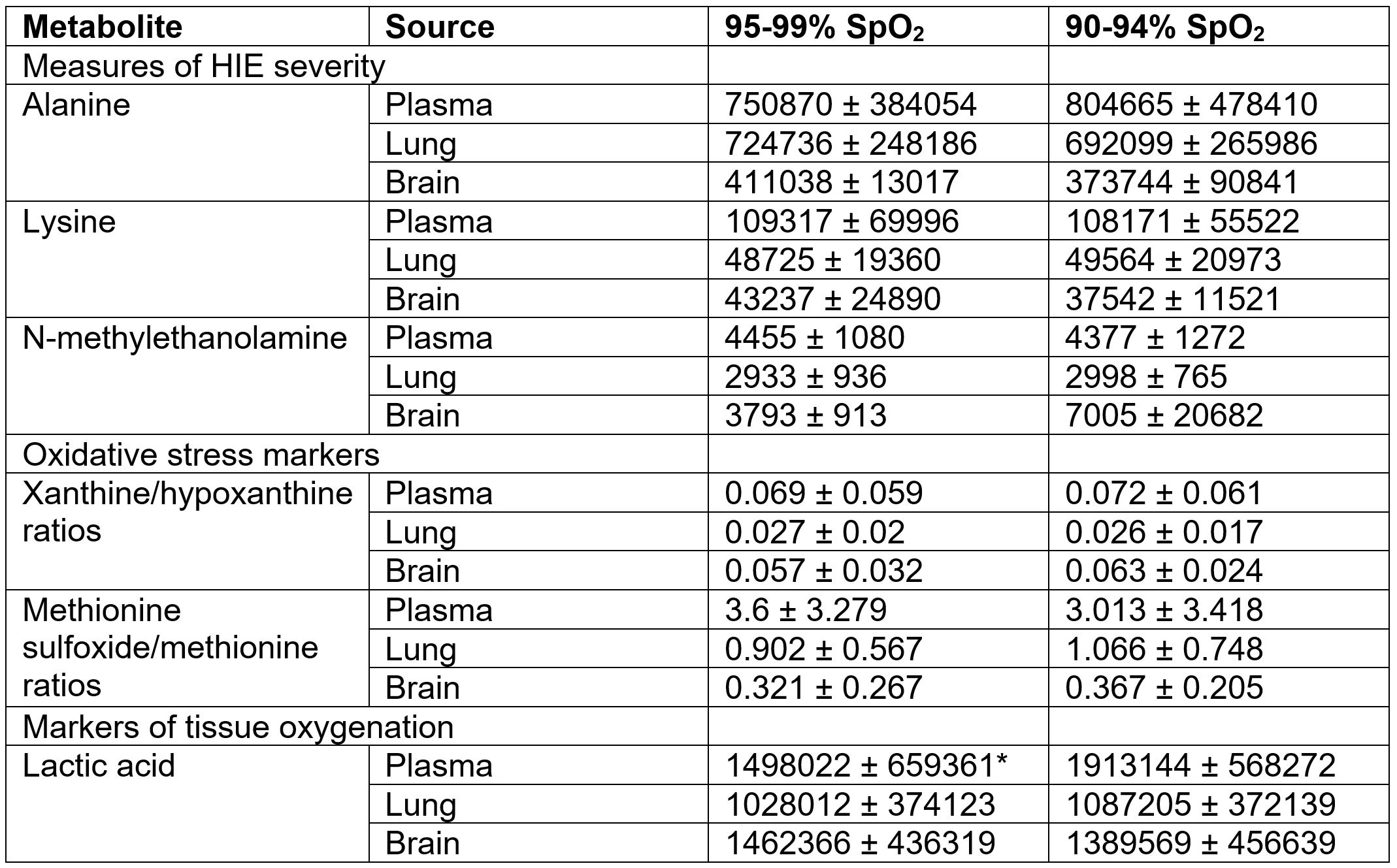Neonatal Neurology: Pre-Clinical Research
Neonatal Neurology 8: Preclinical 2
27 - Targeting 95-99% SpO2 Does Not Alter Carotid Blood Flow nor Brain Oxygen Delivery/ Brain Oxidative Stress Compared to 90-94% in Lambs with Birth Asphyxia and Pulmonary Hypertension
Monday, May 1, 2023
9:30 AM - 11:30 AM ET
Poster Number: 27
Publication Number: 27.434
Publication Number: 27.434
Evan M. Giusto, UC Davis Health, Sacramento, CA, United States; Deepika Sankaran, University of California, Davis, School of Medicine, Sacramento, CA, United States; Amy Lesneski, University or California, Davis, Davis, CA, United States; Morgan Hardie, UC Davis, Davis, CA, United States; Houssam Joudi, University of California, Davis, Torrance, CA, United States; Rebecca Valdez, University of California, Davis, School of Medicine, Davis, CA, United States; Payam Vali, University of California, Davis, School of Medicine, sacramento, CA, United States; satyanarayana Lakshminrusimha, UC Davis Children's Hospital, Sacramento, CA, United States
.jpg)
Evan M. Giusto, RN (he/him/his)
Neonatal Transport Nurse
UC Davis Health
Sacramento, California, United States
Presenting Author(s)
Background: Following birth asphyxia, optimal oxygen saturation (SpO2) targets that minimize brain oxidative stress are not known. Hypoxia can worsen persistent pulmonary hypertension of the newborn (PPHN) and hyperoxia (PaO2>100 mmHg) can increase the risk of hypoxic ischemic encephalopathy (HIE, Kapadia et al, J Pediatr 2013).
Objective: To compare the effect of low (90-94%) and high (95-99%) SpO2 targets on carotid blood flow, cerebral oxygen delivery, pulmonary blood flow, oxidative stress markers (xanthine/ hypoxanthine and methionine sulfoxide/ methionine ratios) and metabolites linked to hypoxic-ischemic brain injury (alanine, lysine, and N-methylethanolamine, Valerio et al PloS one 2022) from plasma, lung and brain in an ovine model of perinatal asphyxia, MAS and PPHN.
Design/Methods: MAS and PPHN were induced in forty near-term lambs by instilling meconium in trachea and occluding the umbilical cord. Lambs were randomized prior to delivery to low (90-94%) or high (95-99%) SpO2 targets. Following delivery, the lambs were resuscitated, ventilated and invasive hemodynamics were monitored. Serial plasma samples were obtained to perform metabolomic analysis. Brain and lung tissues were collected after euthanasia.
Results: Baseline characteristics including gestational age and weight were similar between the two groups. PaO2 was significantly higher in the 95-99% target group compared to 90-94% (77±44 vs. 47±19 mmHg respectively, p=0.02). There was no difference in pulmonary blood flow (88±42 vs. 78±52 ml/kg/min). Carotid blood flow, brain oxygen delivery, and brain oxygen extraction were similar between the two groups (Table 1)). There was no difference in plasma, brain or lung xanthine/hypoxanthine or methionine sulfoxide/methionine ratios suggesting no difference in oxidative stress (Table 2). Plasma lactic acid was significantly higher in low SpO2 group (Table 2). Alanine, lysine, and N-methylethanolamine levels were similar in between the two groups in plasma, lung and brain tissues (Table 2).
Conclusion(s): While a clinical observational study found hyperoxia ( >100mmHg) in the first hour of life increases the risk of HIE, targeting higher SpO2 (95-99%) and maintaining PaO2 at 50-100 mmHg range in a asphyxiated lamb model did not confer any cerebral or pulmonary hemodynamic advantage compared to 90-94% in an ovine model of asphyxia and PPHN. There was no difference in metabolomic markers of oxidative stress or brain injury between the two groups except for lower plasma lactic acid with higher SpO2 target. Clinical studies are warranted to evaluate optimal SpO2 targets in HIE and PPHN.


